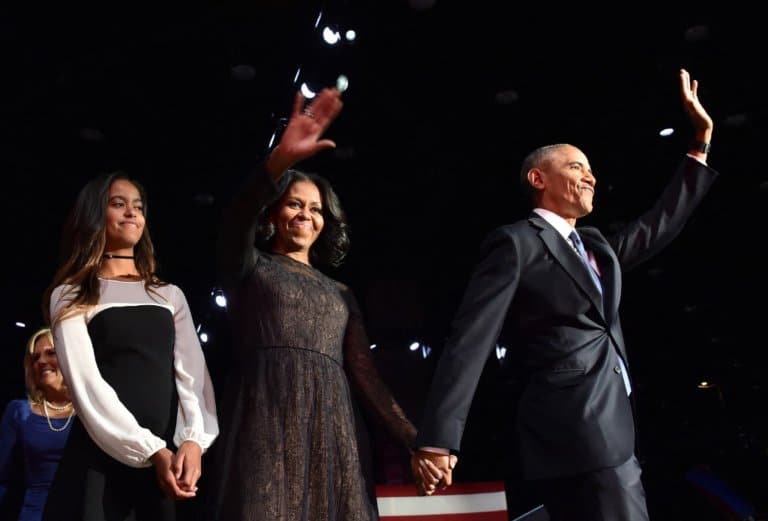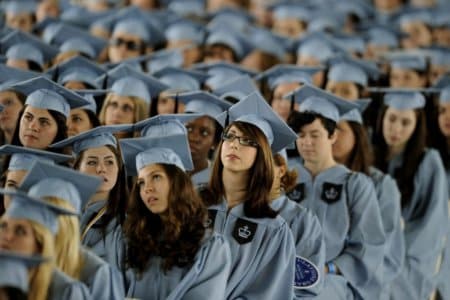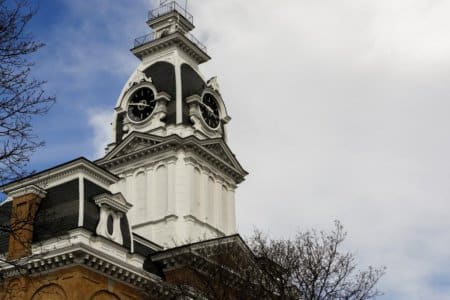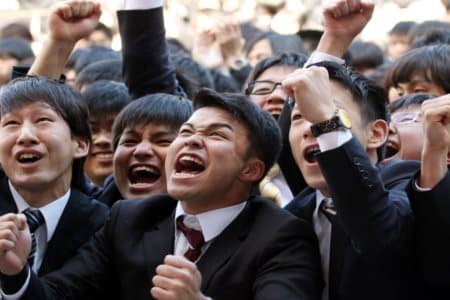
The Harvard acceptance rate can raise the heart rates of students and parents all around the world.
Rich or poor, old or young, anyone trying to get into what’s known as the #1 university in the US will know it’s a long road, paved with many obstacles to overcome and even more hoops to jump.
Founded in 1636, Harvard was started by a vote in the Great and General Court of the Massachusetts Bay Colony — with just 400 pounds for its establishment.
Today, it’s one of the wealthiest in the US — with US$50.9 billion in endowments (that’s how much they have in donations, money and otherwise).
Most of these funds go to programmes, departments, and scholarships. They pay for professor salaries, student life and activities, libraries, art museums, facilities and more.
With so much invested, the university is filled with people and places that can take you and your ambitions very far.
The problem is, the Harvard acceptance rate is one of the lowest in the world.
What you need to beat the Harvard acceptance rate
Harvard University’s acceptance rate for the class of 2026 was 3.19%, its lowest ever, while for the class of 2027, it was 3.41%.
There are around 40,000 applicants competing for about 1,600 available seats. Good grades alone won’t get you in.
You need at least the following to apply to study at Harvard:
- SAT score: Minimum score of 1500+ in SAT
- GPA of 4.18 or higher
- 7.5 or higher on the IELTS test
The university doesn’t just look at academics during admission. Instead, Harvard assesses each student as a whole, considering their character and academic potential.
Here, admissions officers rely heavily on letters of recommendation, college interviews, and extracurriculars to identify outstanding students.
Making matters worse is an opaque and secretive admissions process. Nobody fully knows what admissions officers are looking for.
While one judge has even likened the admissions criteria to the “recipe for Coke,” there are a few things we now know from an ongoing federal trial in the US:
- Do more rural students get admitted than urban students? (Yes, they do)
- Do the children of big donors get preference? (Yes, they do)
- Do athletes get advantages over non-athletes (Yes, they do)
- Do applicants with “unusually appealing personal qualities” get admitted more? (Yes, they do)
These odds are part of a bigger problem surrounding the absurd competition to get into the US’s most elite universities.
It isn’t just the Harvard acceptance rate that is at record lows. Consider the stats below:
- Only 4.34% of applicants got into Yale, 49,975 applicants did not
- Only 3.9% of applicants got into Columbia, 54,883 applicants did not
- Only 5% got into Brown, 48,693 applicants did not
How many among those who got in came from public schools?

Former US First Lady Michelle Obama (R) and daughter Malia beat the Harvard acceptance rate. Source: Nicholas Kamm/AFP
The difference between public and private school
Public and private schools differ in many ways:
Governance and funding
Public schools are funded and governed by local, state, or national government authorities. They are typically operated by school districts or education departments.
According to US News & World Report, Thomas Jefferson High School for Science and Technology is ranked the best public school in the US.
In the UK, King’s College London Maths School is #1 based on A Level results — 100% of all grades were between A* to B.
Private schools, on the other hand, are independently funded and governed. They may be run by nonprofit organisations, religious institutions, or for-profit entities.
In the US, Phillips Academy Andover claims the number one spot, and over in the UK, St Paul’s Girls’ School is known to be the best.
Curriculum and flexibility
Public schools usually follow a standardised curriculum mandated by the state or local education authorities. The curriculum is designed to meet state educational standards and requirements.
Private schools have more flexibility in designing their curriculum. They can often tailor the curriculum to align with their educational philosophy, specific academic programmes, or extracurricular offerings.
For example, a private school in London may offer the International Baccalaureate instead of following the English National Curriculum.

Newark Vocational High School students, Juanita Greene and Rafael Abreu attend the Statue City Cruises Honors Newark Public Schools’ Teacher of the Year with Statue of Liberty Cruise for Class on June 16, 2023 in New York City. Source: Eugene Gologursky/Getty Images/AFP
Class sizes and resources
Public schools tend to have larger classes due to their bigger student bodies. This can result in less individualised attention for each student — and, in turn, worse grades.
Researchers Bruce Biddler and David Berliner found that smaller class sizes led to better average student performance on academic achievement tests.
These are typically found in private schools, who through selective admissions or high fees, have fewer students.
They may also have more resources available, including better facilities, technology, and extracurricular programmes.
Admissions
Public schools are generally open to all students within their designated school district or attendance boundaries.
Private schools can be more selective. They may pick applicants based on how they perform on tests and interviews, and whether they have the right recommendations. Some private schools even require entrance exams or assessments.
In the US, Phillips Exeter Academy admits only a fraction out of its thousands of applicants, and only it they show exceptional intellectual abilities and a strong commitment to learning.
Their application process involves multiple stages, which include students submitting their essays, transcript, test scores and recommendation letters. Applicants need to go through an interview before being accepted as well.

Like many top tech entrepreneurs, Facebook founder and CEO Mark Zuckerberg beat the Harvard acceptance rate and was part of the Ivy League before dropping out. Source: Justin Sullivan/Getty Images/AFP
Harvard acceptance rate: US public vs private school
Based on a survey of its class of 2019, it was found that 35% of students come from private schools.
Many argue they have better Harvard acceptance rates thanks to their resources and opportunities.
Former US president Barack Obama attended private school prior to joining Columbia University for his BA before heading to Harvard Law School.
Fellow graduate Mindy Kaling called herself “the friendly, chubby nerd” at independent Cambridge school Buckingham Browne and Nichols.
Similar to Obama and Kaling, the founder of Facebook Mark Zuckerberg attended a private school before joining (and later dropping out of) Harvard.
Talk about beating the odds, Zuckerberg completed his secondary education at Phillips Exeter Academy which is known for its low acceptance rates and then went on to further his education at Harvard which is known for the same.
However, this does not mean that public schools do not produce famous and powerful people who go to Harvard. Many have proven this is possible, including:
- Michelle Obama, the former first lady of the US: She attended Whitney M. Young Magnet High School, and later Princeton and Harvard Law School.
- Neil deGrasse Tyson, astrophysicist, author, and science communicator: He enrolled in Bronx High School of Science, a public school in New York, and later Harvard.
- Bill Gates, founder of Microsoft: He was a student at a private Lakeside prep school in Seattle, where he wrote his first software programme.

King Charles is among the long list of notable alumni who attended the University of Cambridge. Source: Victoria Jones/AFP
Harvard acceptance rate: UK public vs private school
Oxford and Cambridge used to be the dream of many private school students in the country – especially considering the long list of alumni the two institutions boast. This includes:
- Stephen Hawking
- King Charles
- Albert Einstein
- Margaret Thatcher
- Winston Churchill
- Rishi Sunak
However, this is slowly no longer the case as many students are setting their sights across the pond at leading universities in the US – especially Ivy Leagues such as Yale, Princeton, Harvard and Cambridge.
This increase in interest is a result of Oxford and Cambridge admitting more students from state schools in the country, increasing the competition for places and pushing private schoolers to apply to US universities.
Eton College, which has educated more than a third of Britain’s 57 prime ministers, sent over 50 students, a fifth of its leavers, to leading US unis.
Typically around 25 to 35 students are admitted to Harvard from the UK each year from various schools in the country.

From a UK public school to 10 Downing Street. Source: Henry Nicholls
Should parents send their kids to private or public schools?
Choosing between sending a child to public or private school is a dilemma that many parents face.
Based on a survey of parents participating in the Georgia GOAL Scholarship Programme, over 85% cent of parents stated that they would choose a private school for their children because they believed it offered a better learning environment.
While 81.3% of parents stated that their decision to choose a private school is based on the expectation of a higher quality education.
However, in the US, around 49.5 million students are enrolled in public schools, while only around six million students attend private schools.
Much of this is due to the hefty price tags that private schools come with. A family needs to fork out an average fee of around US$12,350 as of August 2021.
Private day schools in the UK are more expensive still — charging US$20,000 (around half the median household income in Britain) and up to US$28,000.










